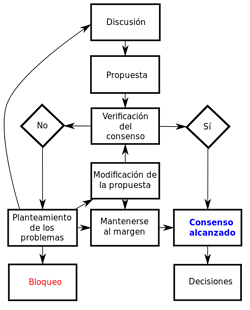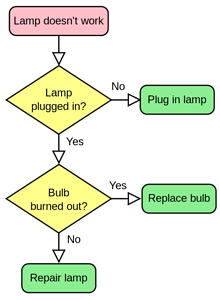#META
OSCEdays is about using, sharing and creating open resources that will enable people to test, implement and improve circular solutions locally.
But how to document a solution? Well. A possible format is an “ACTION Protocol”. An ACTION protocol focusses on creating and providing information in a way, that allows it to become active very quickly.
If you want to document something and you are looking for a format take a look below to get inspired.

#Summary
This is about creating an OSCEdays ACTION. OSCEdays ACTIONS are simple Step by Step Guides everyone in the world can follow to build and experience ‘Open Source Circular Economy’. Basically it is a TEMPLATE for documentation with the goal to make it easy to reproduce solutions or contribute to them. Below you’ll find this template and hints how to create an ACTION protocol.
![]()
#Introduction
The Open Source Circular Economy Days is about growing a collection of ‘ACTIONABLE RESOURCES’ everyone can follow to build, experiment, invent and experience an Open Source Circular Economy. An ACTION protocol is a possible format for this. ACTION protocols are simple step by step guides easy to follow – for example during local OSCEdays events – without understanding any theory.
‘An ACTION is like a board game – for example chess. Everyone can play it – everywhere – when the rules are known. And produce & contribute to a global chess culture by doing this.’
CALL FOR ACTION AUTHORS! We invite people from all professions to add to the list. Create an ACTION! Below you can find a some criteria and a template for ACTIONS.
(Here is a video from an Open Labs event in November 2016 explaining ACTIONS a bit.)
![]()
#You Need For It
-
Template for OSCEdays ACTIONS (shared below)
-
Criteria/Inspiration for OSCEdays ACTIONS (shared below)
![]()
#STEPS
3 simple steps:
![]()
##Step 1 – Check The Criteria & Template
Study the Criteria and Template for ACTION protocols. Both are attached below.
![]()
##Step 2 – Create & Publish The ACTION
Pick a subject for your ACTION and start to write it down according to the instructions given by the Criteria and Template you studied in Step 1.
You can find some ideas for ACTIONS here to get inspired. But feel free to go with your own idea.
You don’t have to publish a finished ACTION. On the contrary. We invite you to develop it collaboratively on the forum. Please find some suggestions how you could approach that in the first comment below.
![]()
##Step 3 – Test It & Improve It
Once written down you should test the ACTION – follow the steps yourself. This might result in improvements. It will also help others to understand the ACTION because there is already a first example for people using it.
_
#Attached Resources
Two resources attached:
(A) TEMPLATE to use + Instructions
(B) Criteria For ACTION Protocols,
![]()

##(A) TEMPLATE For OSCEdays ACTION Protocols
Use the unified template for OSCEdays ACTIONS. Go the the green category ![]() on the forum where your ACTION belongs (for example ‘Energy’, ‘Policy’ or ‘Food’) and create a New Topic
on the forum where your ACTION belongs (for example ‘Energy’, ‘Policy’ or ‘Food’) and create a New Topic ![]() there. Copy the Template text from the grey box below into that topic and replace the Instructions in the template with the requested information. Keep the #headlines – they structure your topic.
there. Copy the Template text from the grey box below into that topic and replace the Instructions in the template with the requested information. Keep the #headlines – they structure your topic.
__
GREY BOX (TEMPLATE):
/ > Delete this & replace it with an Image. Just pull the image via drag and drop into the topic. If you don’t have an image just delete this. / /
#Summary
/ > Delete this and replace it with a Short Summary of the ACTION. Make it 3 sentences or less. Mention what people will do and what will be the outcome. / /
/ > Delete this and replace it with the name of the author(s) of the ACTION like: ‚Created by: Arya @arya & Rickon Stark @rcknstrk’ / /
#Introduction
/ > Delete this and replace it with an introduction to your ACTION. Provide context, share background information, answer ‚Whys’. Make it as long as necessary and as short as possible. / /
#You Need For It
/ > Delete this and replace it with a list of the resources like tools, skills, number of people, time and so on needed for the ACTION. Make it a short overview and link to external sources. Extended explanations can be shared below in ‚Attached Resources’. / /
#STEPS
/ > Delete this and replace it with the single STEPS of the ACTION. Use text size 2 (‘##’ in front) for the headline of each step. Give each Step a number and an individual name like ‘Step 1 – Individual Name’, ‘Step 2 – Different Individual Name’. Don’t forget to add at least one step that involves documentation. / /
#Attached Resources
/ > Delete this and replace it with extended resources and explanations necessary or helpful to run the ACTION. Or information necessary to run the ACTION should be available here or via link to an external website. / /
#Credits
/ > Delete this and replace with credits/attribution to people – for example if you used images, text, code or similar stuff. If there are no attributions to make delete the whole part including the headline ‘Credits’. / /
__
###Suggestions For Writing:
-
Name For The ACTION – Pick a descriptive name that tells already something about what people will do following the steps of the ACTION; write a whole phrase if necessary. Instead of ‘ACTION – Sharing’ make it ‘ACTION – Creating a MAP OF SHARING Possibilities In Your City’. – Put ‘ACTION – ‘ in front of the name.
-
Add the ‚action’ tag – Add the tag ‘action’ to the topic to make it appear on the ACTIONS list. You can also add other tags to show what the ACTION is about.
-
Adapt It To The Step-By-Step-Structure – Each step should have a clear start point and end point. Sometimes it might be difficult to break down an ACTION into single Steps. But do it! You can think of the Steps as an algorithm. It can be possible to skip steps or jump back to earlier ones. Like in the flowcharts below.
-
Documentation – There should always be one or more steps about documentation and at least one of this steps needs to include the OSCEdays Forum. There are different possibilities for documentation – get inspiration here.
-
Why is there a ‚#’ in front of the headlines in the template? – It will transform the word into a headline size 1 – the forum uses markdown. (You may have to erase the empty space in front of it first).
-
Develop It Collaboratively On The Forum – You can develop the ACTION already out in the open. Have a look in the first comment below. to get inspiration how to do that.
![]()
Img1: Diagrama de flujo del consenso; (CC-BY-SA, by frymaster ); Img 2: LampFlowchart.svg; (CC-BY-SA, by Booyabazooka)
![]()
![]()

![]()
##(B) CRITERIA – An OSCEdays ACTION Is
-
A Precise & Reproducible Activity … It should be very clear, precise and easy to understand what people will do in the ACTION. It should be possible to understand the steps without any upfront knowledge of ‘Open Source’ or ‘Circular Economy’. The more universal and reproducible everywhere the better the ACTION. Necessary information like building plans, data sets, guides etc. should be available openly available and come with the ACTION.
-
… On Open Source & Circular Economy … What is ‘Open Source Circular Economy’? This is a broad and philosophical question. There is no clear practical answer. So what ACTIONS fit then? In general every ACTION about (1) sustainable circular economy solutions that use (2) open and transparent collaboration methods that can be reflected with the open definition should fit. The scope is broad! We are exploring.
-
… In The Form Of A Clear Step By Step Guide … The structure of a clear STEP by STEP follows from the template. This is supposed to make it as easy as possible for people to follow the ACTION and achieve the outcome of it.
-
… With A Clear And Defined Outcome … An ACTION has a clear outcome. This can be something tangible like a built machine or implemented solution but also something intangible like a written down documentation or methodology. This outcome marks the end point of the ACTION. – For this some projects should be broken down into smaller steps. A large project like ‘A Database Of Circular Materials’ is not a very clear endpoint for an ACTION. So in this case the ACTION could be: ‘Adding ONE Material To The Database’. This simple ACTION can be repeated many times with the result of building a database.
-
… Achievable In A Certain Timeframe … There should also be a clear starting point. Together with a clear end point it is foreseeable then how much time is needed to complete the ACTION. The shorter the timeframe is the better. OSCEdays right now is event focussed. So ACTIONS that can be completed within 1 to 3 days are more likely to be taken on. If you include preparations for the facilitator it can be more. But for some ACTIONS really long time frames might be necessary – if your ACTION involves growing plants for example. But shorter might be more appealing. Very long ACTIONS could be broken down into several smaller ones.
-
… And Always Includes Documentation. Documentation should always be a part of an ACTION. The documentation can happen in the OSCEdays forum or somewhere else. If the documentation is placed somewhere else at least a link to this this external website should be shared in the OSCEdays forum. – There are many ways how documentation could be included into an ACTION, many of them very simple. Check out this topic about documentation to get some inspiration or see what is possible.
![]()
#Credits
![]()
 Illustration by ottlie.cc (Jenni Ottilie Keppler), CC-BY-SA
Illustration by ottlie.cc (Jenni Ottilie Keppler), CC-BY-SA
![]()
#Questions?
Questions regarding ACTION Protocols. Post your questions below in the comments or contact the ACTIONS Overview Team.
![]()

